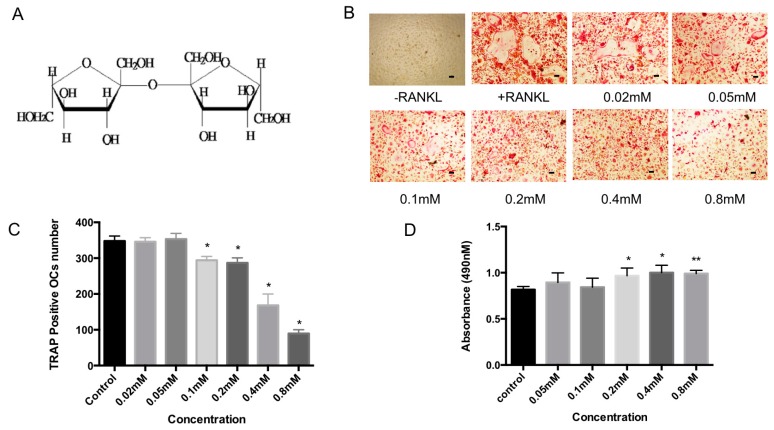Figure 1.
(A) Chemical structure of Bajijiasu; (B) Representative image of 96 well-plate showing the effects of increasing concentration of Bajijiasu (0.02, 0.05, 0.1, 0.2, 0.4, 0.8 mM) on bone marrow macrophage (BMM)-derived osteoclast-like cell formation, Scale bar = 100 μm; (C) Analysis of number of tartrate resistant acid phosphatase (TRAcP)-positive multinucleated (>3 nuclei) cells formed in the presence of increasing concentrations of Bajijiasu; and (D) Effect of Bajijiasu on cell survival as assessed by MTS assay (n = 3, * p < 0.05, ** p < 0.01, versus receptor activator of NF-κB ligand (RANKL)-treated control).

